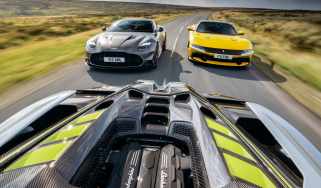Japan’s supercar: revisiting the Honda NSX – car pictures of the week
While all the attention is on the ‘80s stars in evo issue 334, we revisited a ‘90s Japanese legend too
Icon is a word that’s passed around a bit too loosely these days but while there are plenty of pretenders to icon status, surely the supercar that stopped Ferrari dead in its tracks and had it rethinking everything, is a worthy shout. We refer of course to the Honda NSX, with which we got reacquainted in evo issue 334. To read the full test, pick up a copy of evo 334 in-store or online via the evo shop.
Indeed it took Honda’s introduction of a supercar that was dependable, reliable, attractive, usable and of course beautifully balanced to drive, for Ferrari to take that look in the mirror. What it saw was the underwhelming 348, the aging 512TR and the antiquated 412. Its response was decisive: the beauty that was the F355, the stunning 456 and the return to front-engined super grand tourers that was the 550.
Revealed in concept form in 1989, with styling inspired by the F16 fighter jet, the production car broke cover in 1990 before going into production in 1991. It was innovative under the skin too, as the first car to use an aluminium semi-monocoque chassis. Power famously came from the singing 3-litre VTEC DOHC aluminum V6 engine, good for an 8300rpm rev limit and 270bhp. Even though it was a 911 rival at heart it was Ferrari that felt the impact of the NSX’s arrival. Yet none, not in any marketplace, were any worse off for its presence. The NSX in its protracted 15-year production run never set Honda's sales charts alight, though it wasn't a total flop either.
Today, the NSX represents a novelty: a lightweight, naturally-aspirated mid-engined sports car with a super slick manual gearbox. It’s a totem of less is more for driving enjoyment – a car you have to really drive and when you do, one that rewards like little else.
‘The V6 is keen from low revs, gets stronger in the mid-range and then smoothly but thrillingly ramps up the urgency at 6000rpm as VTEC switches to the higher-lift cams. The red line is at 8000rpm and the limiter at 8300, by which time the howl from behind is utterly glorious.
‘The gearshift is slick, accurate and wrist-flick light, and the next ratio drops the revs to 6000rpm, right back to the start of the VTEC zone. You get the impression that if there were no speed limits you’d be well on the way to the 168mph top speed before the acceleration started to tail off.’ – John Barker, evo co-founder and editor-at-large, who tested the NSX for a feature in evo 334.



